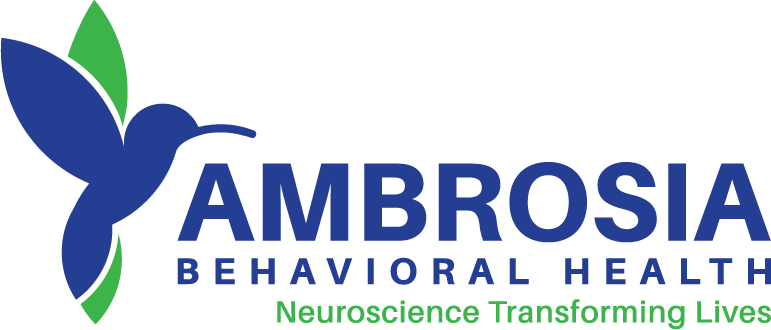Heroin
Heroin is a highly addictive, illegal drug used by millions of people in the U.S. (4.2 million Americans as of 2011) who are often unable to overcome the addictive substance without proper support and treatment.
Florida alone is considered an epicenter of heroin use which is why Ambrosia, located in West Palm Beach is so keen to tackle this epidemic. As a psychoactive depressant, heroin was originally used therapeutically as an analgesic, still legal in some countries to treat acute and chronic pain, and in obstetric epidural anesthesia. In the United States, heroin is a Schedule I Drug, which means its distribution, possession, and sales are illegal. Heroin addiction is defined by the DSM-IV as a chronic disease with four main elements: the desire to use, the compulsion to use, the willingness to use despite consequences, and a lack of control over dosage or frequency. In most cases, heroin use starts as a cheaper alternative to misusing prescribed painkillers, such as OxyContin and Vicodin.
Street Names
Dope, Smack, Brown sugar, China White, H, Horse, Junk, SkagCommon Forms
White or brownish powder, or black sticky substance known as “black tar heroin”Common Ways Taken
Injected, smoked, snortedWhat Are The Signs of Heroin Addiction?
Short-Term Effects of Heroin Use
Once heroin is in the brain, it converts into morphine (an opiate) and binds to the opiate receptors. These receptors control the perception of pain and reward. Using opiates will decrease the reception of pain, and it will increase the reception of reward. Over time, the over-stimulated receptors are not able to produce the same levels of pleasure.
Heroin use alters the brain on a molecular level. It meddles with the transmitters associated with pain, pleasure, and motor activity. Once these changes are made, the brain requires heroin to keep regulating these functions. If you think you might be addicted to heroin, ask yourself the following:
- Cravings – Heroin addicted individuals are afflicted with both psychological and physiological dependence. When you aren’t high, is heroin all you can think about it? Do you find eating, sleeping, and performing daily activities difficult unless you use beforehand?
- Compulsion to use – Over time, users develop “thought process” that compels them to give into their compulsions and use heroin, despite all the havoc the drug wreaks on their lives. Do you find it impossible to stop despite a desire to strong or even desperate desire get clean and sober?
- Loss of control – Are you finding yourself using larger and larger quantities more and more times per day? Tolerance to heroin builds quickly. A large part of what makes it dangerous is because our bodies can’t keep up.
Drug cues, or signs of drug use, vary from person to person, so there’s no concrete list of all existing prompts. However, common cues include associating with other drug or alcohol users, experiencing normal stress or extremely high levels of stress, being in a physical environment associated with former drug or alcohol abuse, and feeling emotional states previously linked to drug or alcohol use.
Long-Term Complications from Heroin
- Collapsed veins
- Abscesses (swollen tissue with pus)
- Infection of the lining & valves of the heart
- Constipation & stomach cramps
- Liver or kidney disease
- Pneumonia
What You Should Watch For
Drug paraphernalia:
- Syringes: the most popular method of consuming heroin is through intravenous injection, commonly referred to as ‘shooting up’.
- Glass or metal pipes: glass or metal pipes with bulbous ends to smoke the contents of heroin.
Physical indicators:
- Drowsiness
- Cold flashes
- Diarrhea
- Insomnia
- Leg twitches
- Restlessness
- Change in Behavior
- Track marks
The drug itself
- Read about what heroin looks like.
Changing Demographics of Heroin Abuse
Heroin use has increased across the U.S. among men and women, most age groups, and all income levels. Heroin users nowadays are predominantly white singles in their late 20’s living outside large urban areas. The average age of first heroin use is 24 years old. As heroin use has increased, so have heroin-related overdose deaths. Because heroin is classified as schedules I and IV illicit drug, many users rack up arrest records.
Heroin & Dual Diagnosis
Heroin use can alter brain chemistry, causing mood changes, suicidal behavior, psychological dependence and addiction. Unless the user is treated for both conditions, it is likely that he or she will relapse.
- A new study from Health Education’s Heroin Prevention Project indicates that almost 75% of those addicted to heroin have a concurrent mental health condition, such as depression or schizophrenia.
- A recent study estimates that 48% of opiate users have experienced depression at some point in their lives.
When depression and substance abuse are treated simultaneously, depressive symptoms often improve. Opiate addicts who go through residential rehab or methadone maintenance treatment have significant improvement in their conditions once they learn how to cope with emotions, direct their thought processes, and live a healthy lifestyle.
Risk Factors
The dangers and risks cannot be understated when it comes to understanding heroin’s effects on the brain and body. There are many reasons for addiction to occur, some of them include the following:
Genetics
Individuals with a first-degree relative with addiction disorder are more prone to become addicted themselves, though genetics alone are not the only factor.
Brain
Repeated drug use changes the way the brain reacts and responds to stimuli. Heroin disrupts communication inside and between the brain’s cells. More drug is needed to compensate for lack of neurotransmitters which leads to dependence and addiction.
Environmental
Socio-economic factors, as well as family beliefs and attitudes and peer influence, affect an individual’s choices about drug use. Homes, where drug use is more acceptable and prevalent, may cause more lenient behavior and attitudes towards them. Environmental factors may include using drugs as a way of dealing with stressors, difficult circumstances or life events.
- Psychological
Untreated or undiagnosed mental illness plays a role in drug use. This may lead to self-medication by use of drugs to tolerate or cope with symptoms of the disorder or illness.
How Heroin is Made
- Initially prescribed as an analgesic and cough suppressant in the late 1800’s, heroin is derived from the opium poppy, often found in Afghanistan and more recently, Mexico. The drug was initially synthesized from morphine, a naturally occurring substance extracted from the seed of a poppy plant.Heroin can be a white/brown powder or a black sticky substance, known as “black tar heroin.”
How Heroin is Used
When heroin is taken, it is absorbed into the bloodstream. It soon makes its way to the brain where it begins to affect the way the user thinks. It also affects the nervous system. Many people who are high on heroin have strange sensations or feelings. They may hallucinate and even feel like things are crawling on them. Hallucinations can cause picking of the the skin which can lead to sores and infections.
- The drug can be injected into a vein or muscle, which produces the quickest effects. The euphoric feeling is felt within seconds, but it is the most dangerous method, with added risks from needle sharing like HIV. Track marks on arms, hands or feet are a sign of intravenous heroin injection.
- The drug can be smoked in a pipe or even mixed with marijuana or cocaine, which can cause coughing and a hoarse or raspy voice.
- As a powder, heroin can also be snorted, which can cause a runny or stuffy nose.
Withdrawal
Heroin withdrawal symptoms can be very dangerous and lead to relapse to avoid coming down off the drug. It is therefore not recommended an individual stop using heroin on their own, rather seek treatment where medication and support can be offered to mitigate some of the symptoms of withdrawal. The process can be unpleasant, but safe detox is necessary to prevent harsh consequences. These side effects may include:
- flu-like symptoms
- intense cravings
- sweating
- nausea
- vomiting
- cramping
- cold sweats
- runny nose
- fever
- diarrhea
- insomnia
Heroin withdrawal should be taken very seriously and done only in the care of a treating facility with knowledge and expertise. The symptoms usually start 12 hours after a recovering addict stops using heroin and can last up to three days.

Hear The Stories

Polly H.
I was addicted to heroin for over 10 years. I thought it would make me more confidant and happier, and for a short time it did. But it simultaneously destroyed my relationship with everyone around me. I had found myself in a lot of compromising positions, often in danger and I rendered myself a lost cause. Nothing could stop me from using, and I wasn’t even sure I wanted to stop. Before I came to Ambrosia, I was trying to withdraw from the drugs myself, but it ended up useless. This treatment center really changed my mind about whether or not I was capable of gaining sobriety. My counselors managed to get my head in the right place and really give me perspective. I’m incredibly grateful that they didn’t give up on me when I already had.
What Every Parent Needs to Know About Heroin
Overdose is common.
Opioid receptors exist in the areas of the brain that that control breathing. High doses of any opioid can cause breathing to stop completely, which leads to death. The high potency of fentanyl substantially increases the risk of overdose. The drug is often sold mixed with heroin or cocaine, which can increase the danger of overdose as well, especially since the user is unaware if or how much fentanyl is included.
Addiction is likely.
Because fentanyl is so addictive, users will not be able to quit on their own and will often use more of the drug each time. As fentanyl is used more often and in more amounts, the likelihood of devastating consequences increase. Even if overdose is avoided, chronic users can suffer from consequences like liver disease or pneumonia.
Naloxone is an opioid receptor antagonist that reverses opioid overdose and restores normal respiration. Overdoses of fentanyl should be treated immediately with naloxone and may require higher doses to successfully reverse the overdose.
The access to this medication varies by state. Because of the sad fact that emergency personnel often come too late, the recent legislative trend is to increase the access to everyone. In the states below, Naloxone is available without a prescription at pharmacies like CVS.
Arkansas • California • Florida • Massachusetts • Minnesota • Mississippi • Montana • New Jersey • North Dakota • Pennsylvania • Rhode Island • South Carolina • Tennessee • Utah • Wisconsin
Because of the dangerous complications (including death), stopping fentanyl should only be attempted in the care of medical professionals. With a safe drug detox, addicts are kept comfortable and cared for, so they want to continue the process of recovery. The supervision also prevents relapse, which would be much more likely to cause overdose since the drugs are no longer built-up in their system. Our West Palm Beach, Florida heroin rehab programs specialize in treating the withdrawals from these opioids.
The heroin withdrawal symptoms usually start 12 hours after the last drug use and can last up to three days, including:
- Flu-like symptoms
- Intense cravings
- Sweating
- Nausea
- Vomiting
- Cramping in the limbs
- Cold sweats
- Runny nose
- Fever
- Diarrhea
- Insomnia
- Fever
- Death
Addiction is a disease, not a choice. Several factors can make an individual more susceptible to a fenanyl addiction, including:
Genetics
Individuals with a first-degree relative with addiction disorder are more prone to become addicted themselves, though genetics alone are not the only factor.
Use of Other Drugs
Repeated drug use changes the way the brain reacts and responds to stimuli. Opiates disrupt communication inside and between the brain’s cells. More drug is needed to compensate for lack of neurotransmitters, which leads to seeking a stronger drug like fentanyl.
Environmental
Socioeconomic factors, as well as family beliefs and peer influence, affect an individual’s choices about drugs. Environmental factors may also include difficult circumstances or life events (trauma), where drugs are used as a way to cope.
Psychological
Untreated or undiagnosed mental illness (including depression or anxiety) plays a role in drug use. This may lead to self-medicating with illegal drugs to tolerate or cope with symptoms of the disorder or illness.








